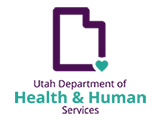Public Health Indicator Based Information System (IBIS)
Utah's Public Health Data Resource
- Home
- Health topics
- Community snapshot reports
- Community indicator report builder
- 3 Steps to Community Snapshot Reports
- Local Health DistrictsPage that describes Utah's Local Health Departments
- Births, fetal death, and infant deaths
- Health surveys
- Cancer registry
- Communicable diseases
- Emergency department and hospital
- Mortality
- Population estimates
- National Toxic Substance Incidents
Data queries
- All data queriesAll data dueries
- My saved queriesMy saved queries
- Saved Queries HelpSaved queries help
- All data queries
- Secure data
- Secure data selectionsSecure data selections
- Apply for EPHT AccessApply for EPHT access
- Apply for Communicable Disease AccessApply for Communicable Disease access
- Secure data selections
Publications Search
- Other DHHS data and publicationsLink to data and statistics page on DHHS website
- About publicationsShow the Utah Public Health Data Publications Introduction page
- Other DHHS data and publications
- HelpIndex of help links and documents for the IBIS-PH web site
- Methodology and GuidelinesInformation about methodology and guidelines for data reported on the IBIS-PH web site
- DHHS Data Sets and ContactsList of Utah Department of Health and Human Services data sets and contacts
- LinksIndex of associated health website links
- Adopting IBISHow your organization can adopt this system
- IBIS-PH Community of Practice WebsiteIBIS-PH Community of Practice website
- Help
- You are not logged in as either an authorized partner dataset user or as a self registered user.
Utah IBIS-PH
- Email: ibis@utah.gov
Utah Department of Health and Human Services
Division of Data, Systems, and Evaluation
P.O. Box 142101 Salt Lake City, UT 84114-2101
For Fed-Ex, use: 288 North 1460 West
Salt Lake City, UT 84116
Utah DHHS
IBIS other
The information published on this
website may be reproduced without permission. Please use the following
citation: "Retrieved Sat, 20 April 2024
from the Utah Department of Health and Human Services, Indicator-Based
Information System for Public Health website: http://ibis.health.utah.gov"
Page Content Updated: Thu, 11 Apr 2024 17:35:53 MDT
The information provided above is from the Utah Department of Health and Human Services
IBIS-PH web site (http://ibis.health.state.gov). The information published
on this website may be reproduced without permission. Please use the following citation:
"
Retrieved
Sat, 20 April 2024 3:23:48
from Utah Department of Health and Human Services, Indicator-Based Information
System for Public Health Web site: http://ibis.health.state.gov
".
Content updated: Thu, 11 Apr 2024 17:35:53 MDT
Content updated: Thu, 11 Apr 2024 17:35:53 MDT
